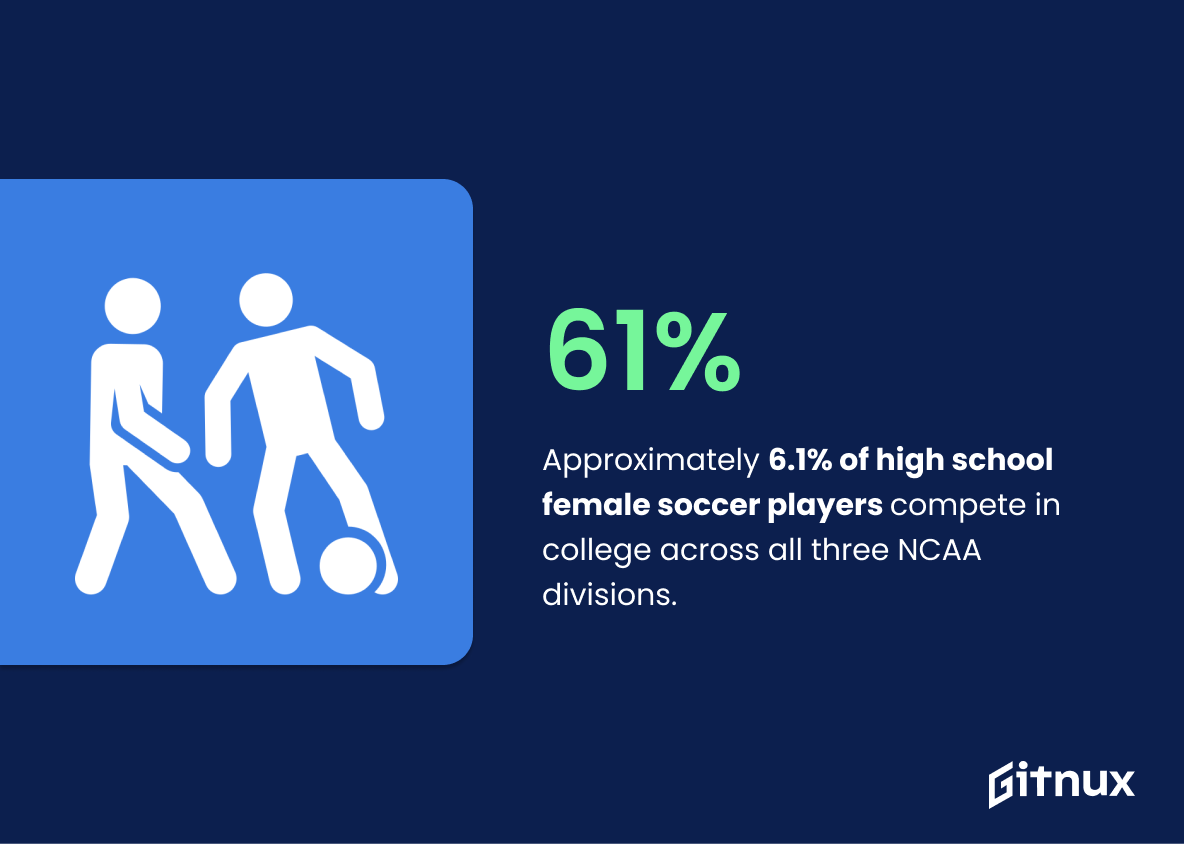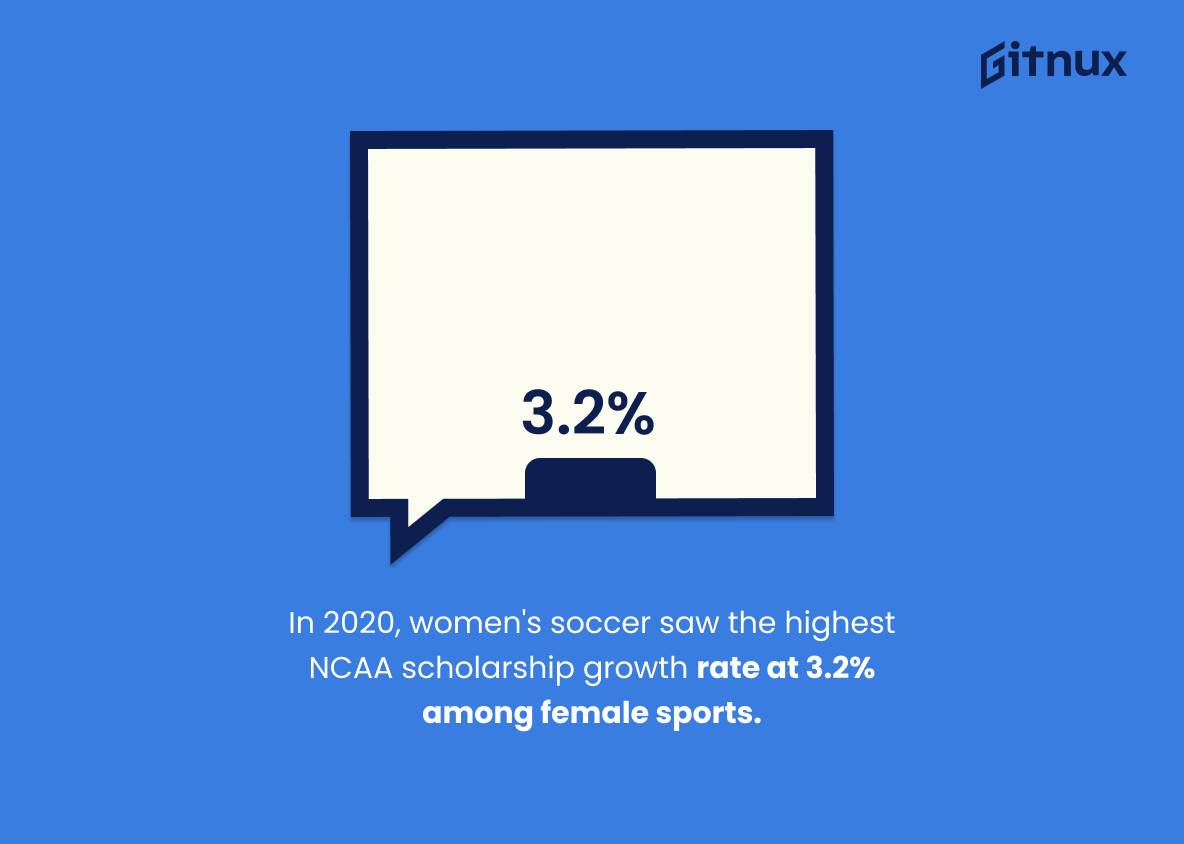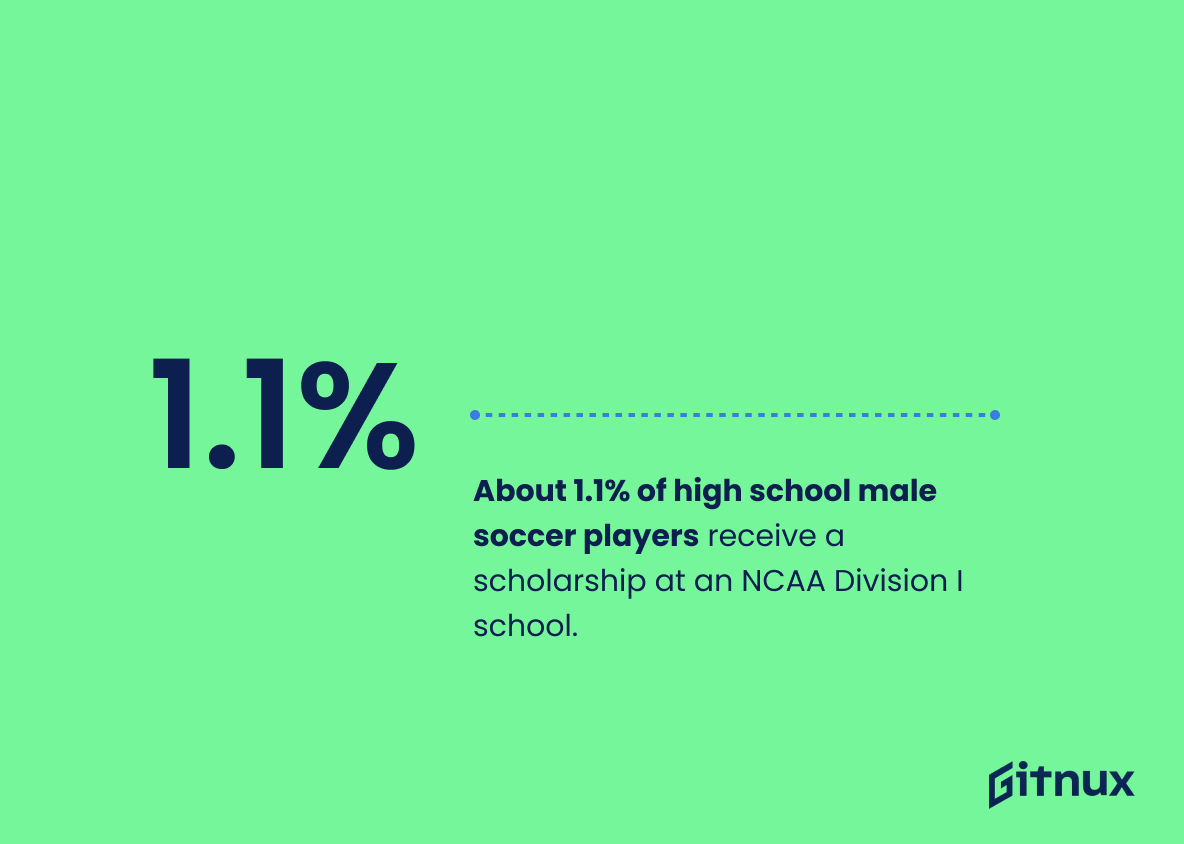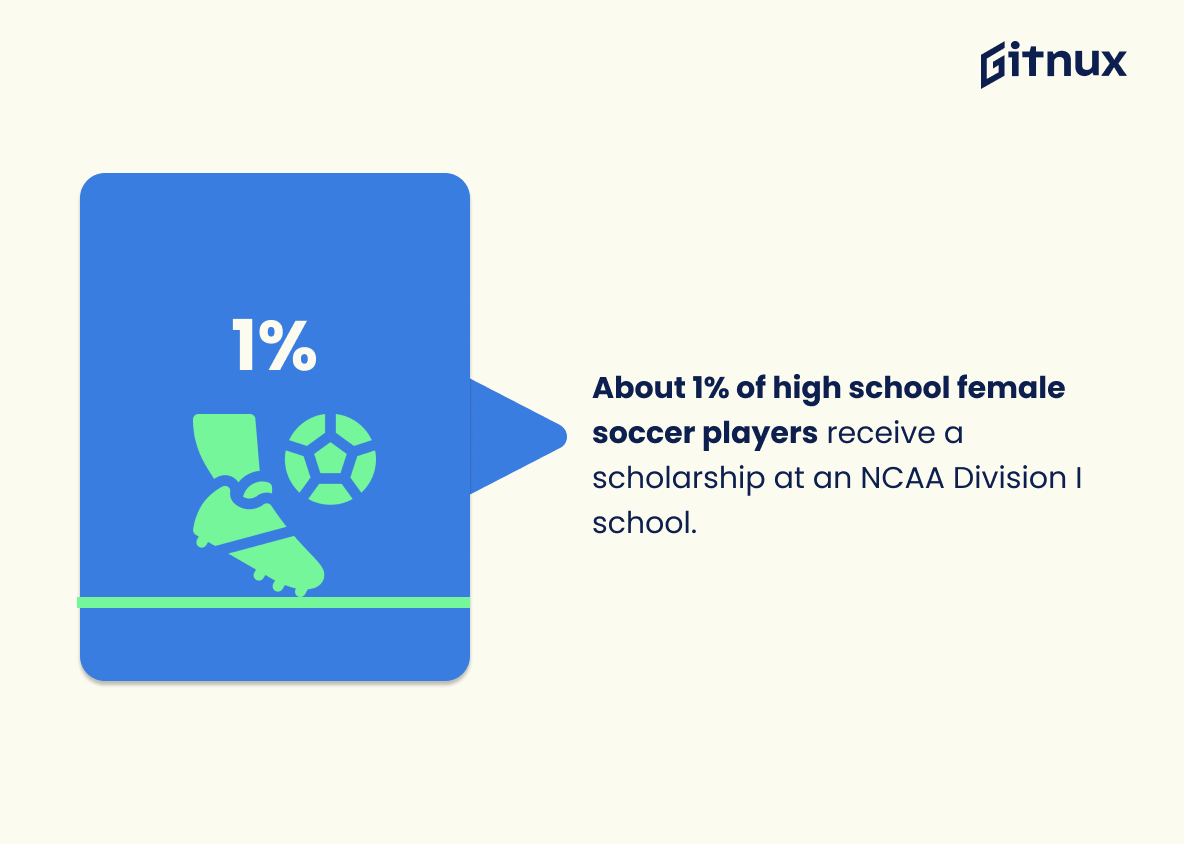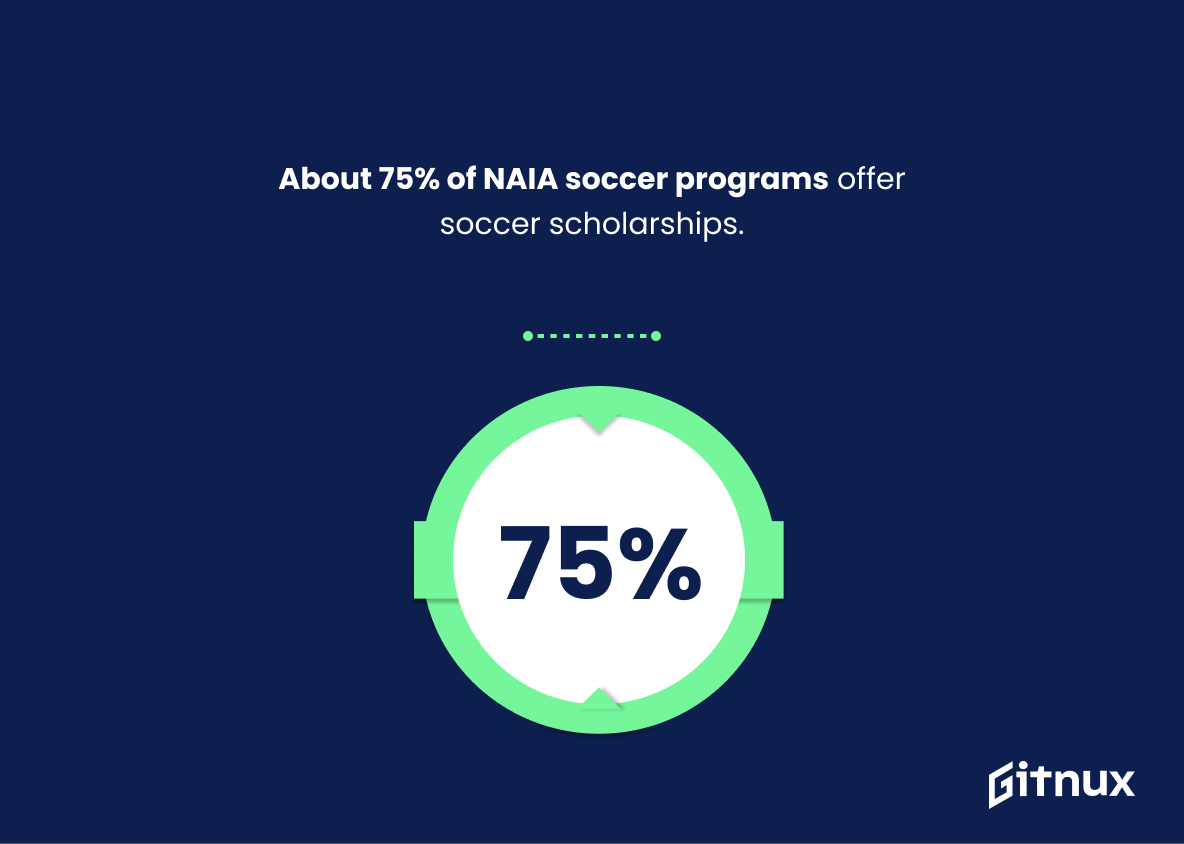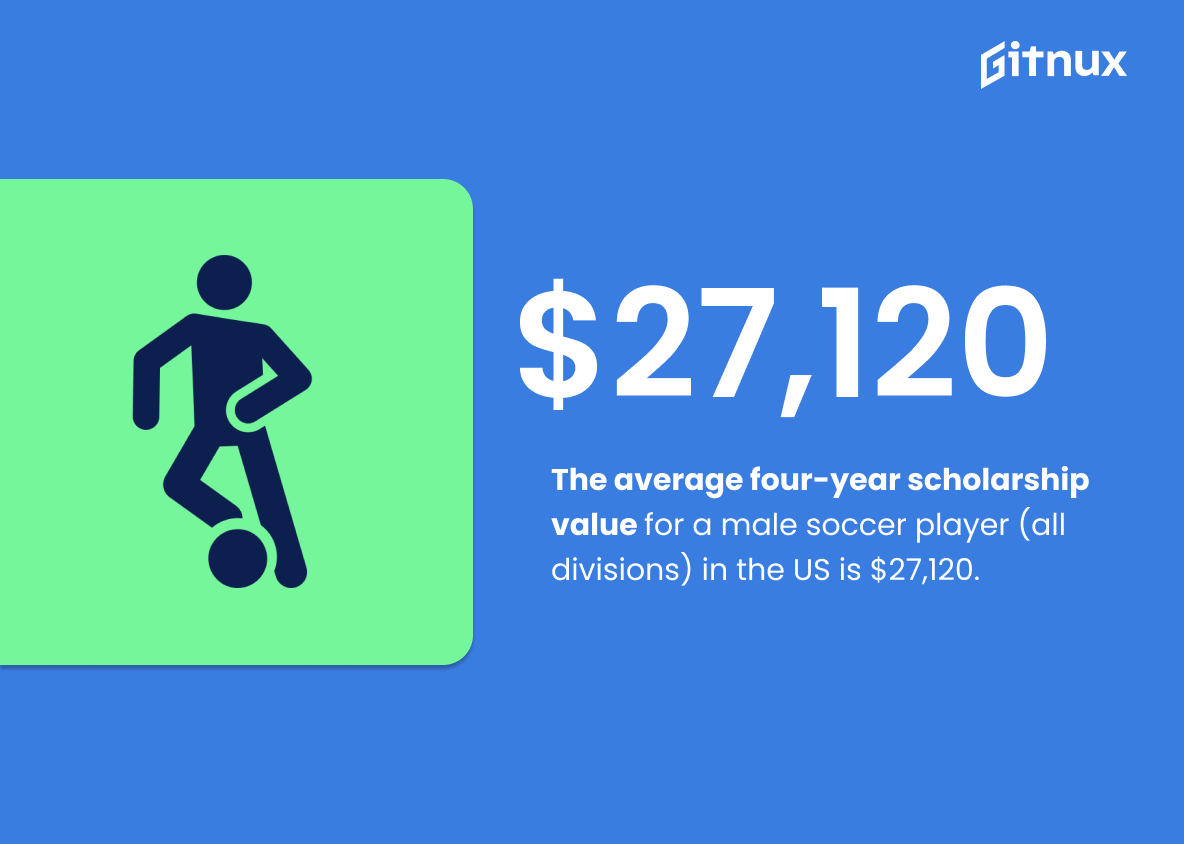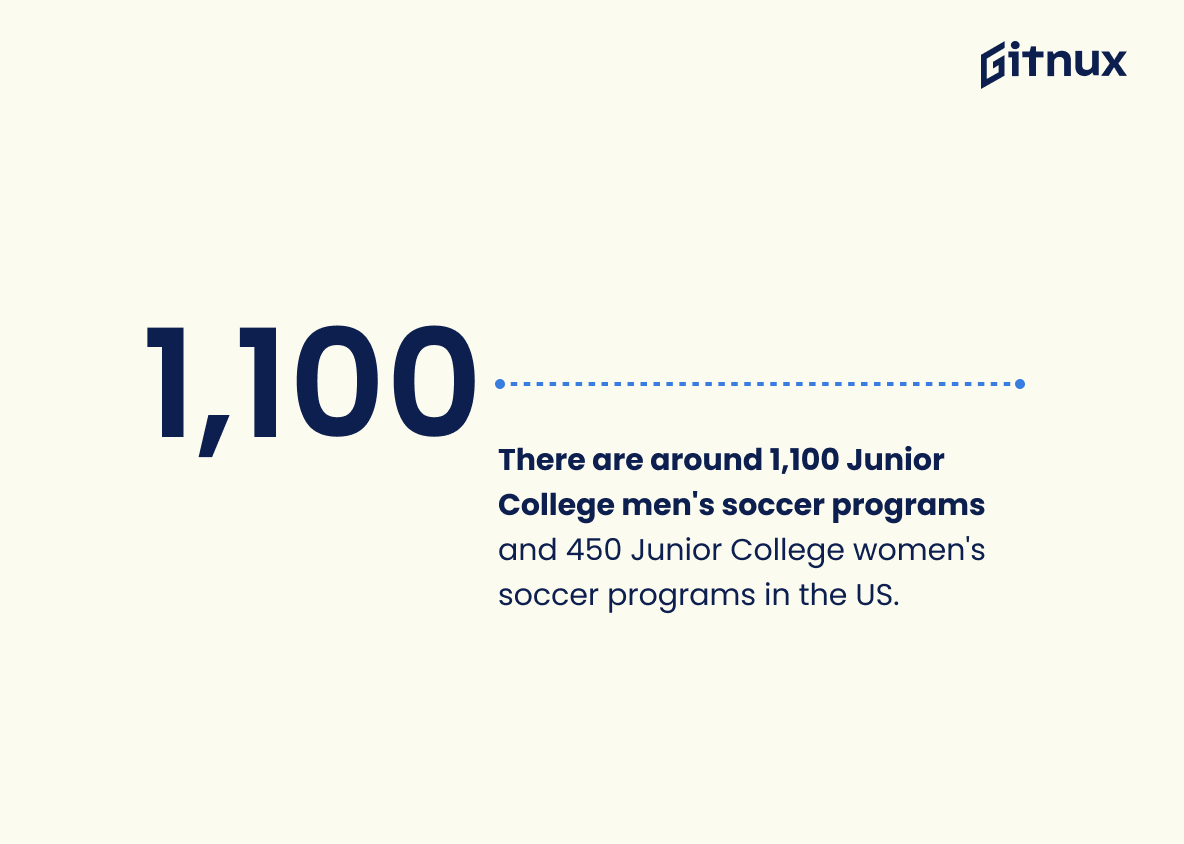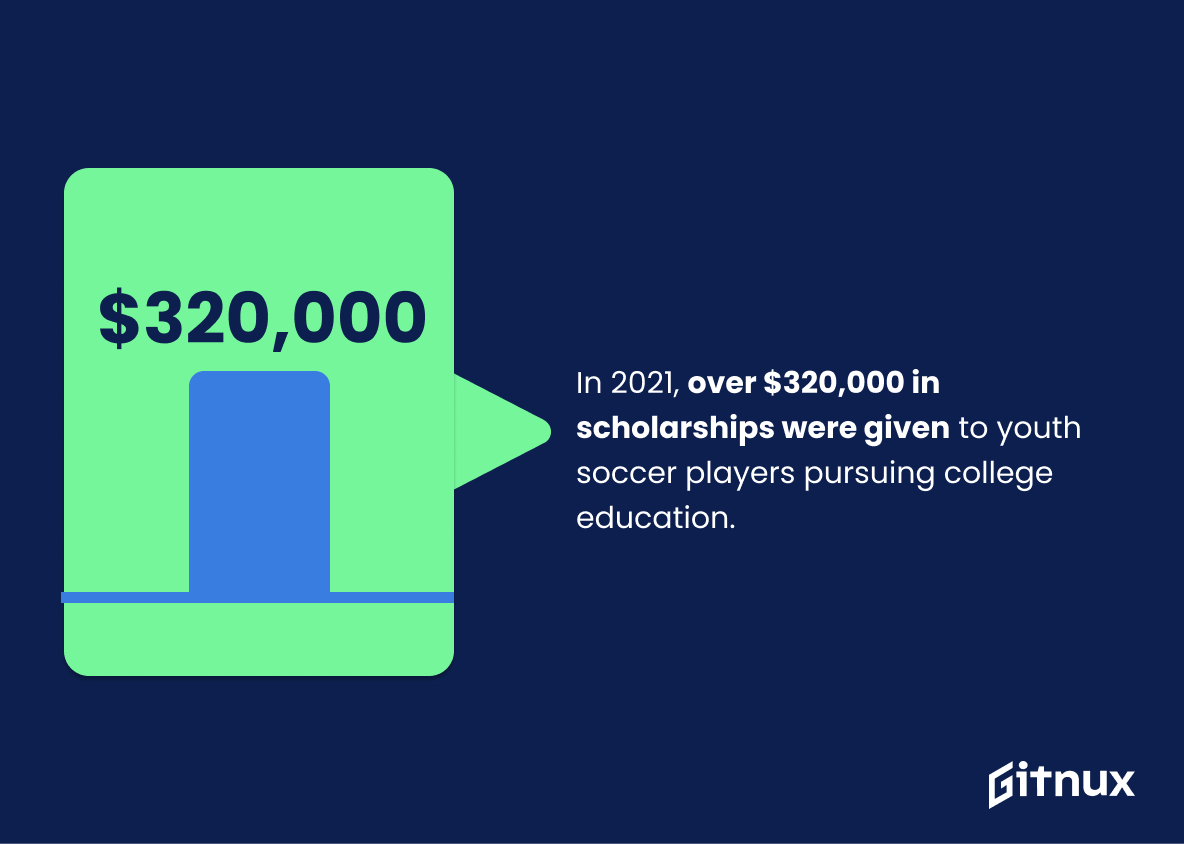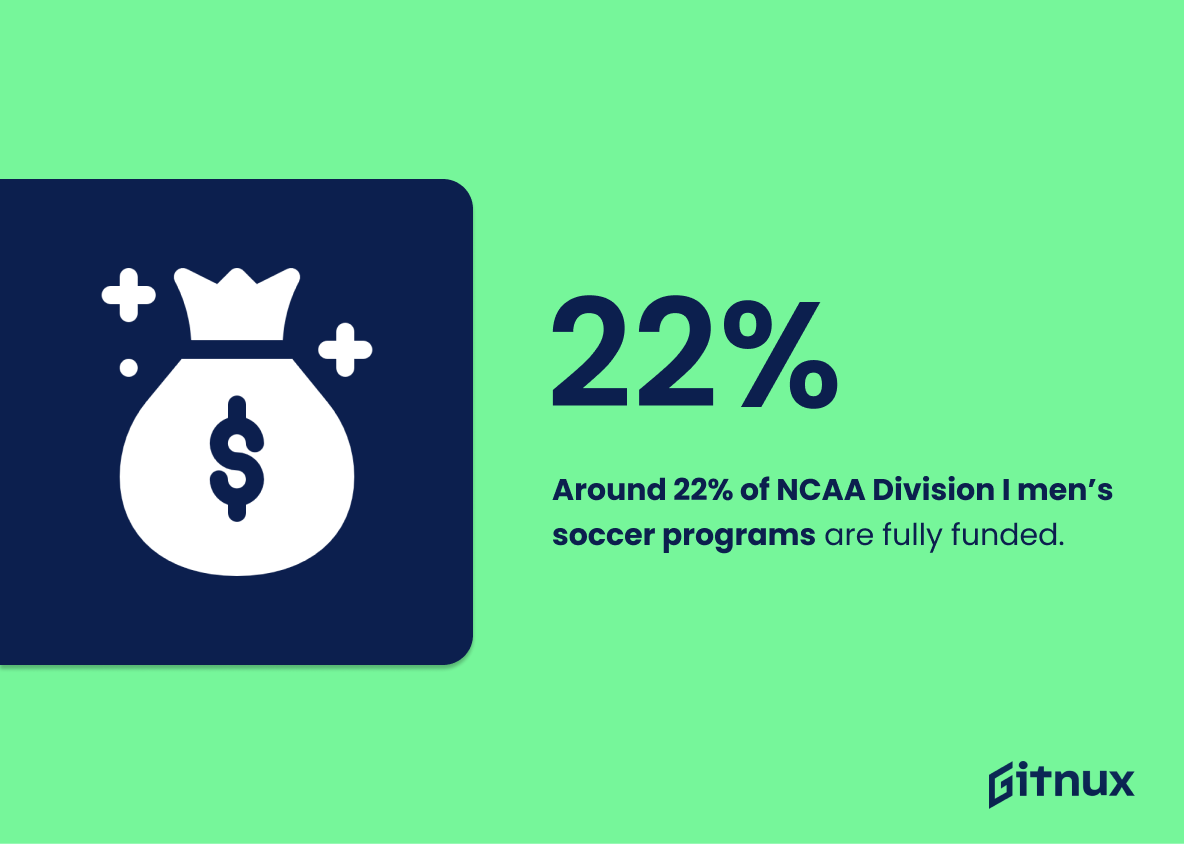Are you interested in learning more about soccer scholarship statistics? From the percentage of high school male and female players competing in college across all three NCAA divisions to the average number of scholarships offered by Division I men’s and women’s programs, this blog post will provide an overview of some key facts. We’ll also look at international student-athletes, growth rates for women’s soccer scholarships, private organizations offering scholarships, and much more. Read on to find out what it takes to get a college soccer scholarship.
Soccer Scholarship Statistics Overview
Approximately 6.1% of high school female soccer players compete in college across all three NCAA divisions.
This statistic is a telling indication of the potential for female soccer players to continue their athletic careers at the collegiate level. It highlights the fact that there are opportunities for female soccer players to pursue their passion and continue to compete in the sport they love. It also serves as a reminder that there are scholarship opportunities available for female soccer players, and that they should take advantage of them.
In 2020, women’s soccer had the highest growth rate in scholarship awarding among all female sports in the NCAA, with a 3.2% increase.
This statistic is a testament to the increasing popularity of women’s soccer in the NCAA, and the growing recognition of the sport’s importance. It highlights the progress that has been made in providing more opportunities for female athletes to pursue their dreams of playing soccer at the collegiate level. This statistic is a powerful reminder that the NCAA is committed to providing equal opportunities for female athletes, and that the sport of soccer is becoming increasingly popular among female athletes.
About 1.1% of high school male soccer players receive a scholarship at an NCAA Division I school.
This statistic is a powerful reminder of the importance of hard work and dedication when it comes to achieving a soccer scholarship at an NCAA Division I school. It highlights the fact that only a select few are able to make it to the top, and that those who do are the ones who have put in the most effort and dedication to their sport. It also serves as a reminder that the odds of success are slim, and that those who do make it have earned their place.
About 1% of high school female soccer players receive a scholarship at an NCAA Division I school.
This statistic is a stark reminder of the competitive nature of soccer scholarships at the NCAA Division I level. It highlights the importance of athletes striving to stand out from the crowd and maximize their potential in order to have a chance at securing a scholarship.
About 75% of NAIA soccer programs offer soccer scholarships.
This statistic is a testament to the commitment of NAIA soccer programs to providing athletes with the opportunity to pursue their dreams of playing soccer at the collegiate level. It highlights the importance of soccer scholarships in helping athletes achieve their goals and demonstrates the dedication of NAIA programs to helping their student-athletes succeed.
The average four-year scholarship value for a male soccer player (all divisions) in the US is $27,120.
This statistic is a powerful indicator of the value of a soccer scholarship in the US. It shows that male soccer players are being rewarded with a substantial amount of money for their athletic abilities, which can be used to help them pursue their academic and athletic goals. This statistic is especially important for those looking to pursue a soccer scholarship, as it provides a benchmark for what they can expect to receive in terms of financial aid. Additionally, this statistic can be used to compare the value of soccer scholarships across different divisions, allowing prospective students to make informed decisions about which division is best suited to their needs.
The average four-year scholarship value for a female soccer player (all divisions) in the US is $29,500.
This statistic is a powerful indicator of the value of female soccer players in the US. It shows that female soccer players are highly sought after and that universities are willing to invest in them. This statistic is a testament to the hard work and dedication of female soccer players, and it serves as a reminder that they are capable of achieving great things. It also serves as a reminder that universities are recognizing the importance of investing in female athletes and are willing to provide them with the resources they need to succeed.
There are approximately 1,100 Junior College men’s soccer programs and 450 Junior College women’s soccer programs in the US.
This statistic serves as a stark reminder of the gender disparity in soccer scholarship opportunities in the US. With only 450 Junior College women’s soccer programs compared to 1,100 Junior College men’s soccer programs, it is clear that women are not receiving the same level of support and resources as their male counterparts.
In 2021, over $320,000 in scholarships were given to youth soccer players pursuing college education.
This statistic is a testament to the power of soccer in providing educational opportunities for young people. It shows that there is a real commitment to helping youth soccer players pursue college education, and that there are resources available to make that dream a reality. It is a reminder that soccer can be a pathway to success, and that there are organizations out there that are willing to invest in the future of these young athletes.
An estimated 400 soccer athletes receive scholarships through private organizations annually.
This statistic is a testament to the fact that soccer is a sport that can open up opportunities for athletes to receive scholarships. It shows that there are organizations out there that are willing to invest in soccer athletes and provide them with the resources they need to pursue their dreams. It also serves as a reminder that soccer is a sport that can be used to help athletes achieve their academic and athletic goals.
Around 22% of NCAA Division I men’s soccer programs are fully funded (offering the maximum number of scholarships).
This statistic is significant in the context of Soccer Scholarship Statistics because it highlights the fact that a large portion of NCAA Division I men’s soccer programs are able to provide the maximum number of scholarships to their athletes. This indicates that there is a significant amount of financial support available for those who wish to pursue a career in soccer at the collegiate level. Furthermore, it demonstrates that there are a variety of opportunities for athletes to receive financial aid and support in order to pursue their dreams of playing soccer at the highest level.
Conclusion
From these statistics, it is clear that soccer scholarships are competitive and difficult to obtain. While the number of international student-athletes competing in NCAA Division I men’s soccer has increased significantly over the years, only a small percentage of high school male and female players end up playing college soccer across all three divisions. Additionally, there are more scholarship opportunities available for women than men at both the NCAA Division I and II levels. However, even with an increase in scholarship awarding among female sports in 2020, obtaining a full athletic scholarship remains challenging due to limited funding from schools or private organizations.
References
0. – https://www.www.varsityedge.com
1. – https://www.globalsportmatters.com
2. – https://www.www.scholarshipstats.com
3. – https://www.stacksports.captainu.com
